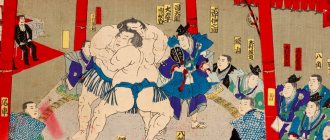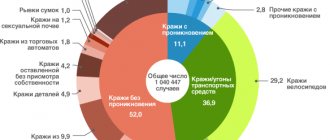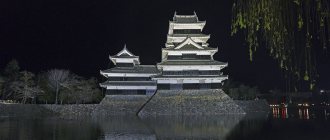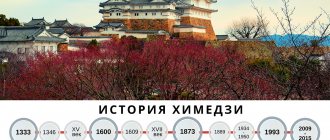Story
The first mention of sumo dates back to 712 AD. For the Japanese people, this is a legend about two Gods who clashed in a duel for possession of the Japanese islands. Sumo wrestling was compulsorily present at the imperial court, as it is partially associated with religion. Even in our times, in some monasteries you can meet sumo wrestlers.
It is known from historical sources that the modern wrestling ground appeared in the 16th century AD, but its size and shape have undergone changes several times. So in some competitions it was a square.
The rules of this martial arts were created from the 8th to the 12th centuries, where participants were strictly forbidden to hit each other on the head or pull out hair.
Also, information has reached our time that athletes organized groups and wandered around various provinces, showing their performances, collecting monetary rewards from spectators. But such fights were often prohibited and eventually died out. The same thing happened with women's sumo. It completely disappeared by the beginning of the 20th century.
Sumo
According to the rules, the sumo tournament is won by the wrestler who manages to push his opponent out of the inner circle of the ring or throw him outside the dohyo (mud ring). An athlete who touches the ground with any part of his body, be it his knee or the tip of his finger, is also considered a loser. Using fists, pulling hair, gouging out eyes, or hitting the stomach or chest is strictly prohibited. In sumo it is also forbidden to grab the bandage that covers important organs. There are no weight differences in sumo, so in a duel you can meet an opponent who weighs 2 times or more than you.
“Starting the day on an empty stomach is one of the rules for successful training for sumo wrestlers,” says Tetsuhiro Matsuda, manager of Takasago Sumo stable. A sumo wrestler's day begins at 5 a.m. with morning training. The wrestlers head to the training room immediately after waking up. Intense workouts on an empty stomach make it harder to burn calories. At about 11 a.m., athletes have their first meal. Young wrestlers help the cook prepare chanko-nabe, a thick pot roast.
Weight gain for sumo wrestlers is a fundamental factor for victories and achievements. According to the Japan Sumo Wrestling Association, 40 of the 42 wrestlers in the makuuchi (major league) weigh more than 140 kg. In 2011, the heaviest sumo wrestler in the entire recorded history of this sport left the ring - Yamamotoyama Ryuyuto weighed 265 kg. The daily caloric content of a sumo wrestler's diet is about 8,000 kilocalories, which is more than 2 times the daily diet of a man in Japan. Immediately after breakfast, the wrestlers head to the bedroom and spend several hours taking an afternoon nap. This helps them gain weight because all the calories they eat are stored as body fat. The giants' next meal will take place around 6 p.m.
Almost everything in the refrigerator will work to make chanko-nabe. Various meats, vegetables and fish are cooked in boiling chicken broth. Chanok-nabe is rich in proteins and is usually served to wrestlers in large quantities along with other accompanying dishes. The practice of chanko-nabe by sumo wrestlers dates back to the Meiji era. This dish is easy to prepare and serve to a large number of athletes at minimal cost. Thanks to intense training early in the morning and before bedtime and two voluminous meals during the day, athletes' bodies are tuned to the mode of preserving adipose tissue.
The idea of Sumotori as a lumbering, 200-pound fat man is completely untrue. Of course, at the dohyo you can also see athletes whose weight exceeds 2 centners. But they are rather the exception. The fighting weight of a rikishi in his prime is 130–180 kilograms. As a rule, when finishing a performance, a wrestler loses several tens of kilograms, and sometimes it is difficult to recognize an expert commenting on the course of a competition as a former heavyweight.
The specificity of sumo requires the athlete to be able to stand firmly on his feet, good coordination of movements, flexibility (any high-class wrestler can do the splits), assertiveness, lightning-fast reactions and ingenuity. The role of a “punching bag” for sumotori is played by a pillar dug into the ground. It can be very difficult for young wrestlers to get involved in the training process. The result of a “working day” is often numerous bruises, abrasions and sprains; The soles of my feet are worn until they bleed.
Japan is a recognized sumo center and the only country where professional rikishi competitions are held. In the rest of the world there is only amateur sumo. The life of a fighter is harsh and ascetic. A young man who connects his life with sumo voluntarily gives up many worldly pleasures. His private life will long be under the constant attention of his coach-mentor and the Sumo Association. Caring for the moral character and physical health of sumotori knows no bounds.
The athlete is strictly prohibited from even driving a car: while driving a car, he can expose himself to mortal danger! Any violation of the regime or unworthy behavior in everyday life is fraught with unpleasant consequences, including expulsion from sumo. Even great fighters may not expect mercy. It took ozeki Takahanada a lot of work to justify himself to the leadership of the Sumo Association after his engagement to the popular actress Rie Miyazawa was dissolved. The name of rikishi must not be tarnished!
Only 70 wrestlers in the elite makuuchi and juryo divisions receive monthly salaries from the Sumo Association. Earnings are very high. With an average salary in Japan of 250-300 thousand yen, rikishi of the juryo category receive 1,036,000 yen, ordinary maegashira - 1,309,000 yen, komusubi and sekiwake - 1,693,000 yen, ozeki - 2,347,000 yen, and yokozuna - 2,820 000 yen per month. In addition, rikishi receive additional prize money from sponsors and bonuses for various achievements during the tournament. Particularly valued is a victory over a yokozuna - kimboshi (“gold star”), for which the sumotori will receive a stable bonus of 40 thousand yen (about $400) throughout his heroic career. For example, Totinonada, who defeated great champions in dohyo 12 times, replenished his bank account by 480 thousand yen after each tournament.
It is not surprising that famous rikishi are considered eligible bachelors. Sumotori's brides include actresses, hosts of popular programs, top models, flight attendants and simply stunning beauties. The negative consequences of hard training and excess nutrition overtake athletes in adulthood. Many of them suffer severe liver damage, develop diabetes, suffer from high blood pressure and are susceptible to heart attacks. The average life expectancy of a sumo wrestler is 60-65 years, which is more than 10 years less than the average life expectancy of Japanese men.
And this is women's sumo...
Source: tourjapan.ru
Appearance of wrestlers
Since sumo is a sport that involves not only physical wrestling, but also traditional rituals, the appearance of the participants has certain standards.
These include:
- The athlete's clothing consists of one single instrument - a belt, which is made of canvas having a length of nine meters and a width of about eighty centimeters. They should turn around five times, including passing the fabric between their legs. It is tied in a special way at the back. If during the fight the belt knot comes undone, the athlete will be disqualified.
- Hair. They are collected at the top of the head in a special bun. This hairstyle not only has an aesthetic function, but also helps soften the blow to the parietal area in case of a fall on the floor.
It is worth noting that the appearance of wrestlers is strictly regulated and depends on the level of the podcast.
The spirit of the samurai Sumo is the fight of giants and giants. Why is it difficult for the whole world to understand her?
Two huge Japanese men in loincloths that look like large thongs go out onto a round earthen platform, stand opposite each other in a half-squat, with their legs spread wide apart, and try to push the enemy out of the area. This is sumo, a sport that everyone knows about, and at the same time this knowledge is limited only to external attributes. Information about this traditional Japanese wrestling is blurred by rumors and fantasies, often far from reality. Lenta.ru collected the main myths about sumo and found out whether they have a connection with reality.
Historically, sumo is not a sport at all. As an applied martial art, it developed rapidly at the end of the 14th and beginning of the 15th centuries. Initially, it was understood as a means of educating the spirit and strengthening the body of samurai. Seeing sumo, a ritual performed at the court of the shogun, the military ruler of Japan, is described in the chronicles of that time in separate chapters. They contain subtle symbolism, without which sumo today cannot be imagined.
Later, sumo from the samurai training system mutated into a full-fledged cultural layer, because, developing its “elite” part, it penetrated into the people. Ritual fights during festivals dedicated to thanking the gods for the harvest began to be held around the same time, at the turn of the 14th-15th centuries. Fast forward 300 years - and by the middle of the 19th century, sumo was becoming not just applied wrestling, but part of the national culture of the Japanese of all classes. Then there were the upheavals of the 20th century, powerful economic and technological progress, but sumo remained an unshakable value for the Japanese, who were inclined to preserve traditions.
“Sumo is everything. This is culture, history, religion. This, to put it in English, is lifestyle. This teaches a lot. How to start living without problems, how to become a normal man, how to behave. That’s all,” Estonian Kaido Hevelson, one of the few foreign professional sumo wrestlers in Japan, tells Lente.ru. There he performed under the name Baruto Kaito - it is taken from the Japanese name for Baltic.
Baruto Kaito
Photo:
And now an important remark that will drive you into a stupor. All this applies exclusively to Japan - only there, strictly speaking, does professional sumo exist with all its rituals and traditions that are strange to the untrained eye. Everything else - national championships, continental and world championships - is held in a more familiar, academic-sports form and is of an amateur nature. That’s why sumo should be considered on two levels – professional and amateur.
Simply because sumo is a sport everywhere, but in Japan it is a lifestyle.
It would be more accurate to say: nowhere do they practice sumo like in Japan. At the age of 19, Baruto entered heya, a sumo school. Although let's say it correctly: according to Japanese tradition, powerful wrestlers are called rikishi, and before becoming great champions, they go through a difficult path.
So, Baruto is an Estonian, at the age of 19 he worked as a security guard, unable to pay for higher education, and at the same time he studied sumo, where he came from judo. Representatives of the Japanese federation came to one of the tournaments, they liked Kaido - and they invited him, say, for an internship. The big, strong Estonian relatively quickly settled into a completely foreign country and, in transit through the university club, ended up at the Mihogaseki school, which also became a school of life for him and his new comrades.
“I never understood why you have to get up at 4:30. We cleaned up at this time, but I knew that this could be done a little later. Only then did I realize: you just have to be perfect,” recalls Baruto.
Briefly, the daily routine of young hei students looked like this: 1) getting up at 4:30, cleaning the area and preparing the dohe - the fighting area; 2) morning training for three to four hours, with the older ones coming down a little later - they are allowed to do this; 3) by 10-11 o’clock in the morning the future rikishi would go to breakfast; the younger ones did the cooking, and the older ones sat down at the table first; 4) after breakfast, a little time for myself, then cleaning again, and by 3 p.m. the evening training began. Then follow the same pattern: cooking, dinner, and a little later sleeping in a room for 12 people.
And so on in a circle. The first time Baruto was released from hei was two and a half years later. His passport had expired and he had to return to Estonia for a while. Otherwise they wouldn't have released me.
The Japanese, to put it simply, are confused. There is not a single thing in professional sumo that does not carry some meaning. Dohe is made for each tournament by a team led by a master with ten years of experience; clay of a special type is selected for it and carefully compacted, and then sprinkled with sand - as a sign of purity. Then salt is thrown on top - this is no longer purity, but purification. Now it will be terrible: women are strictly forbidden to enter the doha, and if this happens, it is necessary to call a Shinto priest - he must perform a purification ceremony.
Photo: Itsuo Inouye/AP
Above the doha hangs a kind of roof, symbolizing a Shinto shrine. The judges speak exclusively Japanese, and they speak a lot and quickly - they encourage the wrestlers during the fight. There is a whole sumo district in the Ryogoku area of Tokyo, where a grandiose palace was built to host tournaments. “This structure is surrounded by special tassels of different colors - these are the seasons. Sumo is a very symbolic sport. Any action that takes place here has an explanation,” confirms Yuri Golubovsky, senior coach of the Russian sumo team.
Tournaments (hombasa in Japanese) are held not only in Ryogoku Palace, but throughout Japan. They begin on the first of every odd-numbered month and last approximately 15 days. So there is no way to forget about the great rikishi; in Japan they are real rock stars. Powerful, gigantic, with a traditional bun at the back of the head - wrestlers, as a rule, attract crowds of spectators. “In 2012 I became champion, I was a star,” Baruto says. A year after this, the Estonian ended his career due to constant pain in his knee, but then he worked for four years on local television - this stranger, who became a champion in Japan, was so recognizable.
Remember that there are two levels: professional and amateur sumo? Well, the great Japanese rikishi practically never go beyond the boundaries of their small but rich world. In fact, this is forbidden to them.
So, professional athletes do not participate in the World or European Championships (the latter, by the way, was held in Estonia in April, all organized by Baruto), and they are treated rather leniently. It turns out that when talking about the strongest sumo wrestlers in the world, we a priori discard Japanese rikishi. By the way, the Russians were the strongest at the continental championship.
“In Russia and in the world, sumo is viewed only as a competition, a sport. The fighting technique that exists in Japan is not represented here. There are practically no people who have been practicing sumo since childhood. They come from judo, Greco-Roman wrestling, freestyle wrestling, sambo. And this mixing of everything leads to some kind of symbiosis,” says Golubovsky.
Indeed, sumo in its pure form does not exist outside of Japan. “In the world,” the organization of competitions is extremely simplified. They are held in gyms, Doha, of course, not made of clay at all, but of rubber - but with a dome over it. “Simply because Europeans and Americans do not have all the gestures and symbols that are in classical sumo, they do not understand them,” notes Golubovsky. For many athletes, competitions at the continental or world championship level are the first in their lives: they go out, immediately lose, and that’s the end.
Photo: Russian Sumo Federation
1/2
And sumo tournaments do not attract large-scale interest. From the outside, fights often look chaotic, sometimes ridiculous, again due to the insufficient level of training of the athletes. Usually, Golubovsky points out, they not only do not master wrestling skills, but also do not pay attention to the cultural side of sumo, do not study its traditions and do not accept the moral principles to which sumo leads. “For many, this is just a way to extend their sports life,” the coach is sure.
There is no real sumo in the world - this is a fact, but Baruto Kaito believes: the general level of athletes is growing. And along with them, the level of competition should also increase.
Shock: at the European Championships, men had a weight category of up to 70 kilograms, and women - up to 55. But this, perhaps, was something only vaguely reminiscent of sumo.
In Japan there are no weight categories or women's divisions. A wrestler weighing 140 kilograms and a wrestler weighing 200 can compete in Dokha - the former’s chances of winning in this case are catastrophically small. Baruto weighed just two centners and was a champion, won the imperial cup, and in the ranking of the best wrestlers in the country reached second place - an amazing success for a foreigner.
“If you look at a professional from Japan, then his figure... Most people have the opinion that a shapeless mass, a carcass, comes out on the doha <...> And a sumo wrestler must have a set of physical qualities: coordination, strength, stretching, explosive speed. They have huge shoulders, arms, legs, like weightlifters. There is also a belly, of course, but it is needed to gain weight. At the same time, the wrestler is in such physical condition that any professional athlete would envy,” says Golubovsky.
So people who are obese do not go to dokha. Rikishi are athletes with enormous physical strength. In addition, each of them, with their own weight, must do the splits - their stretch is enviable even for those who weigh 65 kilograms. And any MMA fighter would envy their weight-lifting skills. Baruto says: “In wrestling, my normal weight is 200 kilograms. But in life I could easily lose 40 kilograms. My weight did not cause any problems.”
But, again, all this applies more to professionals from Japan; mostly just massive people come to amateur competitions, says Golubovsky. And sumo most often is not their main activity.
In Japan, professionals who rise to the top division and stay there become rich. After winning the bout, the wrestler is given a special kense envelope containing the prize money. Top athletes also have a support group, which includes influential businessmen who provide sponsorship, although they are not officially sponsors.
Photo: Donald Miralle/Getty Images
Over the years of his career, a rikishi can easily earn a comfortable retirement. Their fees, of course, do not reach the level of football players, but there is a lot of money in professional sumo. A real rikishi always sends part of what he receives to the heya - the school that raised him. By the way, the names that sumo wrestlers take for themselves often come from the name of the school. Baruto is an exception because he is the son of the Baltic Sea.
Japan has not been isolated for a long time, but sumo, traditional and professional, continues to live within itself. What enthusiasts in Europe or America are trying to reproduce most often only resembles this struggle and becomes an adapted version of it: rituals and the spiritual component are discarded, and purely sports regulations are written. The International Olympic Committee, by the way, recently recognized the International Sumo Federation, which means that in the future the Games program may include one more type of wrestling. But the Olympics, according to the charter, is a competition of amateur athletes. And professional sumo wrestlers can only be in one country.
The Japanese live on their own, compete on their own and don’t really let anyone into the world of their sumo. And they themselves do not come out of it. However, there is life without them. Many teams consistently perform at the World and European Championships with varying degrees of success. The level of wrestlers in these teams is often questionable - after all, few people practice sumo. But there are national teams of Mongolia, Ukraine, Bulgaria, in which there are many skilled athletes. However, among the participants there are usually no equals to Russians. At the World and European Championships, domestic wrestlers traditionally take most of the medals, competing primarily with the teams listed above.
Perhaps this is exactly the case when the same word means two different phenomena. It seems that sumo in the form in which it exists in Japan can only exist in Japan. Well, it’s not easy, that’s all. After all, no one in the world plays rounders, right?
Rules
What kind of sport is sumo?
The regulated rules of wrestling include:
- You can only hit the enemy with an open palm;
- Do not hit the eyes or the lower abdomen (groin area);
- It is unlawful to use chokeholds;
- The beginning of the fight is considered to be a simultaneous counter jerk of the wrestlers;
- The first one to touch the floor with any limb loses;
- An athlete who touches any part of his body outside the boundaries of the court is considered a loser.
The smallest sumo wrestler defeats the giant yokozuna (champion) Hakuho Sho
Grand Champion Hakuho had a 59 kilograms (130 lb), 34 centimeters (9.4 in) advantage over his opponent.
You don't need to be a sumo expert to know that there is a pretty strong correlation between a wrestler's success and his size. Example: Mongolia-born Hakuho Sho , who held the yokozuna (Grand Champion) title longer than any other sumo wrestler in history and also holds the lifetime record for most wins in sumo's top makuuchi division, standing 192 centimeters (6 ft 3.6 in) tall in height and tips the scales at 158 kilograms (348 lb) , making him a veritable giant in Japanese society.
On Sunday February 9, 2021, when Hakuho went up against Enho Akira in a match at the 44th Grand Sumo Tournament in Tokyo, not many people gave the little sumo wrestler much of a chance. Enho is the smallest makuuchi sumo wrestler ( the highest division of the six divisions of professional sumo) , standing at only 168 centimeters (5 ft 6.1 in) tall and slender, by the standards of his profession, 99 kilograms (218 lb).
Small in body, but great in deed.
The size difference is so great that the start of the match, seen in the video below, almost looks like Photoshop, or a competition between a grown man and a child, due to the fact that Hakuho can hold Enho at arm's length by pressing his palm against the diminutive wrestler's forehead. But you know, “the spool is small, but expensive ,” right?
About 15 seconds after Hakuho moved his outstretched arm to the side, Enho changed tactics. With both hands, he pulls Hakuho's wrist down, disturbing the yokozuna's balance and forcing him to take a step forward. That's all Enho needs to get inside Hakuho's defense. From there, he manages to grab hold of his opponent's mawashi (loincloth) and shin before flipping Hakuho onto the ring surface with a dramatic, 270-degree shitatenage (armpit throw) for a clean victory.
Small, short, but strong.
Enho and Hakuho are actually friends and members of the same stable, as sumo training houses are called. This was the first time Enho defeated a yokozuna from his stable in competition. "He feels good. “I’m happy,” Enho said after the match. “This is something I will never forget,” he added, echoing what many sumo fans say.
The donkey is big, but it carries water, the falcon is small, but it is carried in their arms.
Views: 3,247
Share link:
- Tweet
- Share posts on Tumblr
- Telegram
- More
- by email
- Seal
Liked this:
Like










